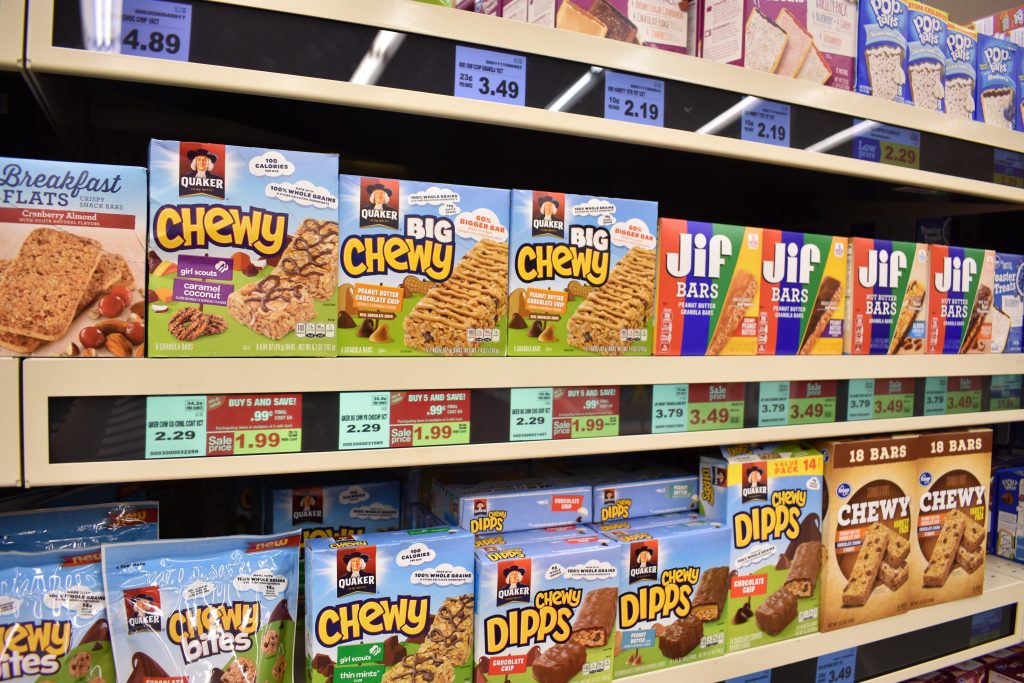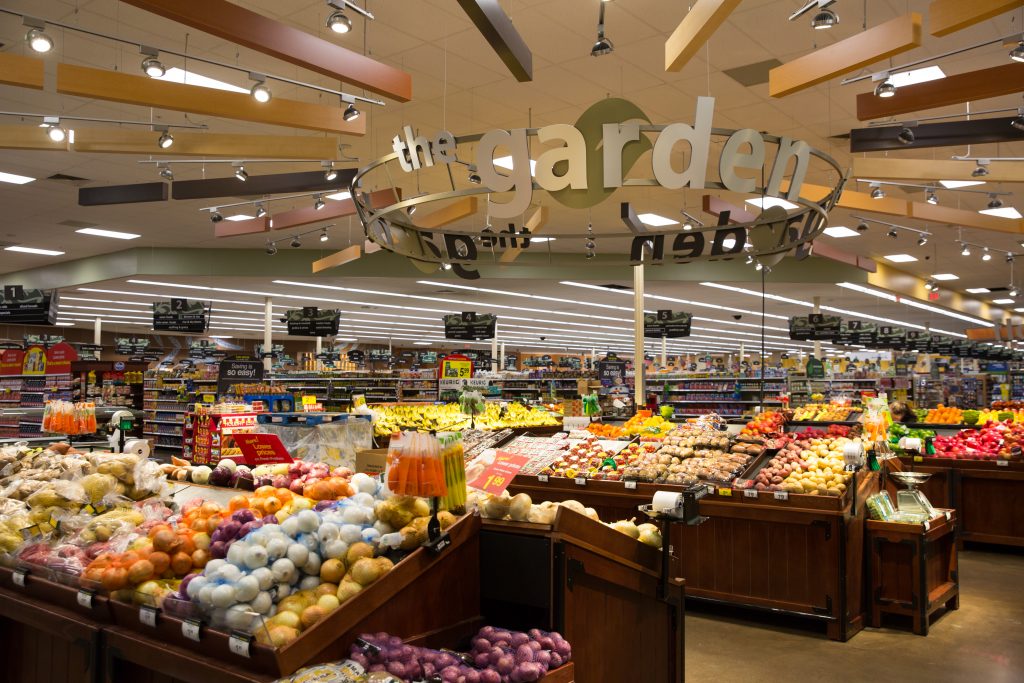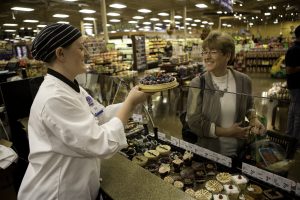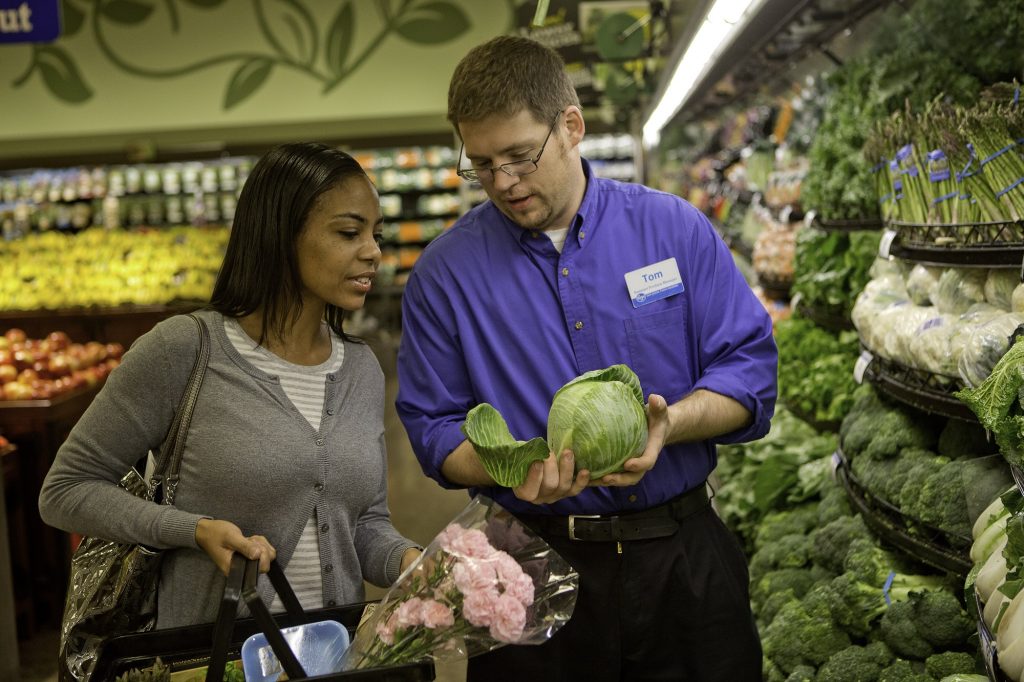Kroger’s smart shelves ditch the paper, drop the lights and delight the shoppers
The future beckons in Aisle 3.
Your eyes scan side to side to absorb product-packed shelves ablaze with digital prices, deals of the hour and imagery of foods that soon may star on your dinner table. You’re thinking Italian.
You look closer. Nutritional and allergy data stream from the IoT-enabled display. Sundried tomatoes announce they are gluten free. Pasta sauce reveals: “I’m local!” Bluetooth in the shelf interacts with the shopping list in your smartphone, lighting up a shelf beneath the very next item you came to fetch: fettuccine.
That’s what you see in Kroger EDGE, a new, cloud-based signage solution for retail shelves. But what’s not here is equally enticing: no printed price tags, no cardboard promos and none of the bright lighting normally needed to blast extra photons onto all of that paper.
“It’s cleaner and environmentally efficient – and our customers perceive that and like it,” says Brett Bonner, vice president of research and development. “This is green power.”

EDGE – which stands for Enhanced Display for Grocery Environment – relies on Microsoft Azure to store and process volumes of data generated by customer actions on and around the shelves.
Connected by IoT sensors, EDGE beams real-time info from every aisle and endcap at 16 test stores located near the company’s Cincinnati, Ohio headquarters. This year, the Kroger Co. – America’s largest supermarket chain – will introduce EDGE at 120 total stores.
Quietly, though, the new solution also shines an environmentally gentle light on Kroger’s larger commitment to earth friendliness, Bonner says.
EDGE is designed, for example, to use a low-voltage, direct current that meets standards set by the EMerge Alliance, an industry association that’s leading adoption of safe, efficient power in commercial buildings.
As EDGE matures, it will run on renewable energy sources, Bonner says. Currently, the system uses an LED light source that saps far less power than incandescent or fluorescent light bulbs.
“The main reason for having big lights in stores is because you’ve got to light it up to read paper tags,” Bonner says. “With this, you can also turn down your lights.”

Over the next two years, Kroger aims to cut its cumulative electricity consumption by 40 percent across the nearly 2,800 stores it operates in 35 states under two dozen banners, according to its sustainability report.
In fact, the company’s energy-reduction efforts saved more than 135 million kilowatt hours during 2017 – and more than 1.7 billion kilowatt hours during the years since 2000. Those actions recently earned Kroger the 2018 Energy Star Partner of the Year Award from the U.S. Environmental Protection Agency.
All of those kilowatt hours “equate to an energy amount to power 146,000 single-family detached homes, such as in Portland, Oregon, for a year,” says Kristal Howard, head of corporate communications and media relations at the Kroger Co.

There’s more. Kroger’s new “Zero Hunger Zero Waste” plan seeks to end hunger in communities it serves and to eliminate food waste throughout its operations by 2025.
Technology – particularly the Internet of Things – plays a central role in many of these ecological pursuits, Bonner says.
And the upside of going green is, well, more of another kind of green.
“Kroger, we believe, is the world’s largest IoT company. For example, we have deployed a food-temperature monitoring system in all our stores. A lot of companies are still trying to figure that out. Kroger is finished,” Bonner says.
Called FAST (Food at Safe Temperatures) Alerts, it uses IoT sensors to constantly track the temperatures inside cold and frozen food cases, sending store associates digital notifications if, say, a freezer door is left ajar or if there’s a mechanical breakdown.
“We’ve saved tremendous amounts of energy with our IoT. So in addition to the social impacts, that means money saved and a great financial return,” Bonner says.
Kroger may ultimately port FAST Alerts to Azure, Bonner adds.
The Microsoft cloud has also helped fuel the financial edge derived by Kroger EDGE. Azure allows the system to use dynamic pricing – that is, commodities such as seasonal produce can be priced closer to real-market values or highlighted for flash deals, while special promotions can also be easily created and launched.
Those have helped boost sales, Kroger reports. In addition, each shelf can carry vibrant advertising, which is helping to increase ad revenue.
“It brings the information richness of the internet to the sights, sounds, touch and feel of retail,” Bonner says.
“The path to purchase for an internet shopper is typically a click and wait. In this case, you’ve got all those features – and standing in front of your product is a motivated buyer ready to reach and pick,” he adds.

Kroger has run thousands of tests on EDGE to assess customer response (it scores, the company says, above the 90th percentile on positive sentiments) and many experimental demos to continue building its futuristic features.
In one demo that involved a special app, customers were able to give their smartphones instructions like: “Show me the item with the least sodium,” causing the shelf containing that product to light up, says Kevin Fessenden, EDGE product manager.
Another demo links the digital shopping lists in customers’ smartphones to EDGE, creating a custom avatar for each shopper.
Here, Fessenden reveals the superpower qualities he envisions in EDGE.
“My avatar is Spiderman. As I’m walking through the store, every time I see a digital tag on the shelf with Spiderman on it, I know that’s an item on my shopping list.”
For a Spidey fan, that gives a whole new meaning to browsing the “web.”
Top image: A Kroger associate speaks with a customer. (All photos courtesy of Kroger)








